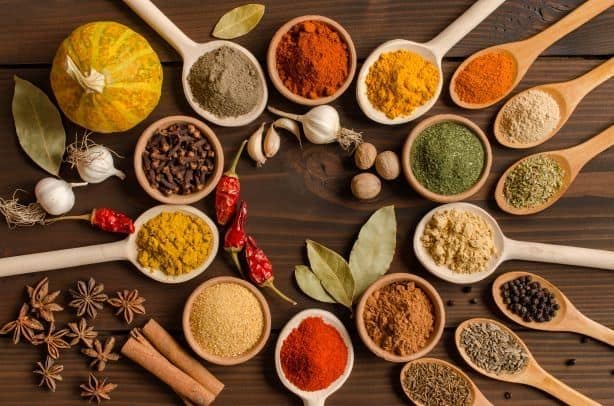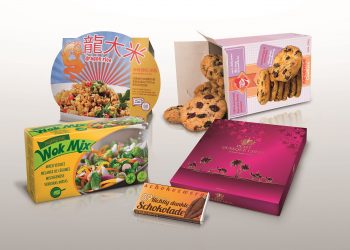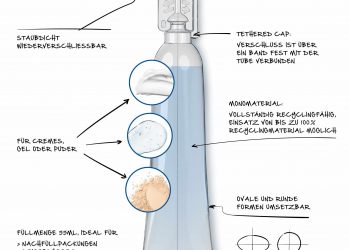Since Historic times, India has been a front-runner in the race for export of spices. India leads in the production and their exports of different spices and products in the last few years have shown an increasing trend. The major spices that are exported are mint products, pepper, cardamom, turmeric, ginger, chillis, cumin and coriander. Export of value added products like spice oils and oleoresins is also significant. This article provides an insight into the market share and the key players of spices export. It also depicts the various options of packaging systems for spices with respect to export.
Introduction:
Today, Indian spices are the most sought-after globally, given their exquisite aroma, texture and taste. India has the largest domestic market for spices in the world. India is the world largest exporter and producer of spice and spice products. Out of the 109 varieties listed by the International Organization for Standardization around 75 varieties are exported and produced by India and therefore India is known to be the “home of spices”. Spices are aromatic substances of vegetable origin obtained from various roots, barks, leaves, stems of certain plants. They have a varied range of properties and cater to the cosmetic, perfumery, medicinal and food industries. In the medicinal sector, they act as antioxidants, antimicrobial agents. To the perfumery industry, the processed products of spices like oleoresins and spice oils play an important role. Spices are valued mainly for their distinctive colour, flavours and aroma and thus are indispensable for culinary purposes and flavouring.
Global Market Scenario:
Share of major spices in India’s spice exports during 2017-18 (%)

Source: Tea Coffee Spice of India
Major Export Destinations:
The US is the major export destination for India followed by China, Vietnam, the UAE, Malaysia, Saudi Arabia, the UK, Germany, Singapore and Sri Lanka. Exports to the US stood at US$ 351.6 million followed by China at US$ 335.39 million in 2012-13.
Primary Exports: Among whole spices India primarily exports pepper, chilli, turmeric, ginger, cardamom, coriander, cumin, fennel, fenugreek, celery, nutmeg and mace garlic, tamarind and vanilla. Processed spices such as spice oils and oleoresins, mint products, curry powder, spice powders, blends and seasonings are also exported.
During 2013-14, spices and spice products valued at US$ 2,267.67 million has been exported from the country as against US$ 2,212.13 million in 2012-13, which is an increase of 3 per cent.
Cardamom registered a growth in value of 68 per cent from the exports. Other spices with notable growth include coriander, cumin, pepper and curry powders with rates of 52 per cent, 35 per cent, 30 per cent and 29 per cent respectively.


Source: IBEF
From the above chart we can conclude that the mint product is the highest in ranking among the commodities that are being exported from India followed by chillis, cumin, turmeric and coriander.
In the year 2013-14, around 8 lakh tonnes of spice and spice products were exported valued at Rs 13 crore against 7 lakh tonnes valued at Rs 12 crore in the year 2012-13 registering an increase of 12% in volume and 13% in rupee terms and 3% in dollar terms of value.The total export of Spices during 2013-14 has exceeded the target in terms of both quantity and value.
Processing :

Spoilage Factors:
– Formation of dew on the product due to excess heat and improper ventilation.
– Microbial contamination due to increased humidity.
-Loss of aroma due oxidation reactions of aromatic compounds within the spice.
– Discolouration due to sunlight thus causing loss of the spices natural pigments.
– Ingress of moisture thus causing the spice to lose their free flowing property.
– Insect infestation

Moisture content of spices is a critical parameter in packaging as the excess of moisture has to be eliminated to avoid deterioration of the product.
Quality Control and Standards
Since quality is an important parameter for export of Indian spices, the Spices Board established the Quality Evaluation Laboratory in 1989 for monitoring the quality of spices produced and processed in the country. The laboratory provides analytical seor exporting abroad. The regional quality evaluation laboratories are established across the countries:
• Mumbai (June 2008)
• Guntur, Andhra Pradesh (2010)
• Gummidipoondi, Chennai (2011)
• Narela,New Delhi (2012)
• Tuticorin (2013)
The various quality standards which are applicable are BIS, FSSAI, AGMARK, ASTA, and ESA.BIS has prescribed quality standards for 16 spices, spice powders, concentrates and oleoresins.
Different Product Options For Spices:

Packaging System:

Packaging of Ground Spices
Ground spices in general are highly sensitive to climatic and are prone to various types of deteriorative changes such as loss of volatile oil, free flow properties (caking of the product), microbial spoilage and insect infestation during storage and transportation. Colour pigments in red chillis get discoloured considerably when exposed to light and oxygen. Furthermore, losses of essential oils result from considerable seepage and oozing out of the oils of the spices through the packs.
Bulk Packaging Of Ground Spices:

Paper bags laminated with HDPE woven fabric on the inner side of the bag and inside a liner of (LDPE/HDPE) are either attached or it is stitched to the bottom of the bag. Multiwall paper sacks, textile bags, and HDPE woven sacks are used for bulk packaging of powdered spices.
Institutional Packs:


Source: Everest masala
BOPP laminate pouches are used which are then put into a corrugated box as a tertiary package. Ground spices are also packaged in aluminum pouches which are then put into paper board cartons. Curry powders such as garam masala, channa, pav bhaji, chat etc are packed in PET jars.
Packaging of Whole Spices:


Source: APMC market Source: ITC spices
The traditional method of storing whole spices is in jute bags. A twill, B twill or DW gunny bags are used depending upon the value of the spices and according to the client specifications. The weave clearance of “A”-Twill, “B”-Twill and DW gunny bags are 1-2%, 3-5% and 4-6% respectively which prevents spillage and also restricts insect movement into the bags. Polyethylene lined gunny bags and HDPE woven sacks are being used to restrict moisture ingress during storage.
Comparison between jute and PP/HDPE woven sacks:

JUTE PP/HDPE WOVEN SACKS
Heavier as compared to PP and HDPE Light in weight
Susceptible to insect infestation Not susceptible to insect infestation
More cost as against PP/HDPE Cost effective
U.V degradation U.V resistant
Raw material prone to insect infestation or natural calamities Widely available throughout the year due to advances and transparency in technology
For cardamom capsules, polyethylene lined plywood boxes are being used. Multiwall paper bags with an inner liner are also used for whole spices.
Packaging of Curry Leaves:

Bay leaves are packaged in polypropylene. Some are also packed in PE bags which are then put into solid board cartons.
Currently the latest trend is a method known as press bale. In this method, the product is pressed down by the action of hydraulic pressure which causes the leaves to compress. They are then tied together and covered with either a jute cloth or polypropylene. In this way there is a lot of reduction in the quantity and as a result more quantity can be packed into the containers to be exported which in turn reduce freight charges.
Packaging of Spice Pastes:


The spice pastes were traditionally packed in glass jars but due to the fragility of glass, it now being replaced by flexible metalized poly/polyester laminate pouches, which are very good barriers to moisture. Some of the commonly used laminates are:
• Polyester/metalized polyester/LDPE
• BOPP/LDPE
• BOPP/metalized polyester/LDPE
• Polyester/Al foil/LDPE
Packaging of Spice Oils and Oleoresins:


Source: Sami spices
Oleoresins and volatile oils are obtained by extraction of ground spices with organic solvents and these are mainly export items. These being volatile in nature need to be properly packed and protected. The chief oleoresins are from pepper, chillis, turmeric and ginger. As per Indian standards, these products are to be supplied in tightly closed glass, pure aluminum, or food grade HDPE containers. Stretch blown bottles of polyester (PET) are also being used for oils due to their outstanding barrier properties. Aluminum cans were traditionally used to pack oleoresins which are now being replaced by HDPE jerry cans and HDPE containers.
Conclusion:
Although considerable progress has been made in the country during the last decade in the field of spice packaging, there is vast scope for the development and evaluation of new materials for packaging of spices. Due to susceptibility to insect infestation and the many disadvantages listed above as of today PP/ HDPE woven sacks are being preferred over jute. They are preferred due to their properties such as light weight, easy availability, compatibility, hygienic nature, machineability, printability, heat seal ability and selective barrier properties. Thus standardized packaging materials are used to retain the fragrance, property and extend higher shelf life of all products.
Dr. R. Rangaprasad, is currently Business Head, Packaging 360, a Mumbai based knowledge service provider vertical under Catalyzing New Technology (CNT) Expositions & Services LLP. Packaging 360 is a comprehensive knowledge sharing ecosystem for the Indian packaging industry (www.packaging360.in).
Dr. R. Rangaprasad is a chemical technologist by training having earned his Ph.D. (Tech) degree from UDCT (now ICT) in 1992.







